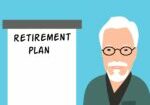Did you miss the second fastest bear-market recovery of the past 50 years?
We might look back and marvel how during the dog-days of August 2020, the stock market reached a new high not seen since pre-COVID.
Remember when the S&P 500 closed at a then record high of 3,386 on February 19th? And just three short and very painful weeks later, the S&P closed under 2,500, a drop of 26% in about 16 sessions?
Well, on August 17th, the S&P 500 eclipsed its February high in mid-morning trading, and it appears as if it might march on to newer highs too. Of course a lot can happen, but with a rally of near 50% since the lows of March, the S&P 500 is now in positive territory year-to-date and it should give investors reason to ask what’s next and whether it might last.
Second Fastest Recovery in 50 Years
Remember when the COVID-shutdown led to the onset of the fastest-ever bear market from market peak? Well, if the market officially passes its February high in August (and stays there), it will go down as the second fastest bear market recovery in the past 50 years, behind the rapid recovery back in 1982. And while the rapid recovery in 1982 took just 3 months, it is worth noting that the bull market from the 1980s, which eventually kicked off the greater bull market of the 1990s, also began in mid-August.
Bear Market Bottom |
Gain in 1st Year of Rebound |
| 2020 | 50% so far |
| 2009 | 69% |
| 2002 | 34% |
| 1987 | 23% |
| 1982 | 58% |
| 1974 | 38% |
| 1970 | 44% |
Past Performance is No Guarantee
While everyone knows that past performance is no guarantee of future results, a look at past recoveries does at least provide perspective.
Bear Market Bottom |
Decline |
Months to New High |
Market Return Over Next Year |
| 2020 | -34% | 5? | TBD |
| 2009 | -57% | 49 | 21% |
| 2002 | -49% | 56 | -7% |
| 1987 | -34% | 20 | 9% |
| 1982 | -27% | 3 | 20% |
| 1974 | -48% | 69 | 13% |
| 1970 | -36% | 21 | 8% |
What Does it Mean for Investors?
The truth is that no one knows what the markets will do between now and the end of the year, let alone into 2021 and beyond.
- Is there a risk we could end up back in bear-market territory? Of course.
- Are we kicking off a new bull market? Maybe.
- Will there be some bumps along the way no matter the direction? Absolutely.
Focusing on whether we’re in the midst of a bull market recovery for a minute, consider that generally speaking, during the first year of a bull market recovery, investors have experienced a few pullbacks of 5% or more. In fact, in the recoveries of 2009 and 2002, there were 3 pullbacks of at least 5% in the first year and 1 pullback of 10% in 2002. And in the recovery of 1987, there were 5 pullbacks of 5% in the first year of that recovery.
One of the best things investors can do during recoveries and pullbacks is make sure they adhere to their disciplined investing plan, which is derived from their personal financial plan, which is built by their financial advisor.






